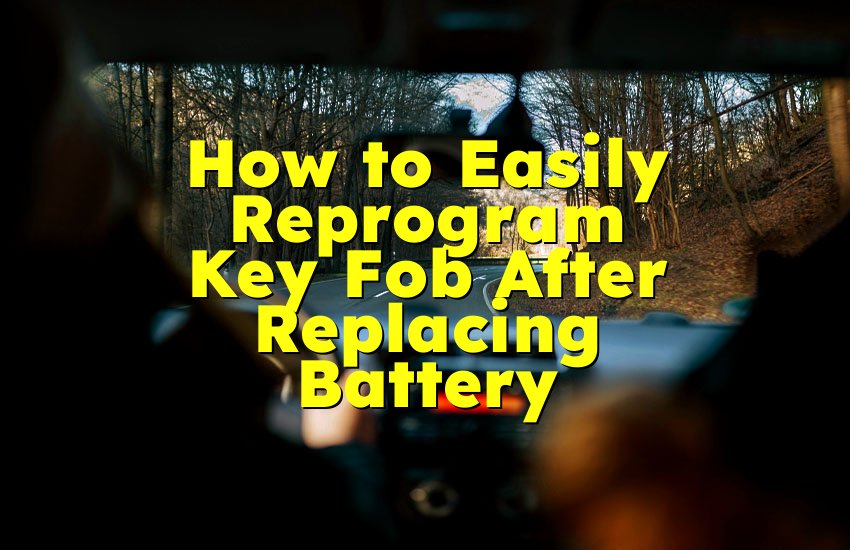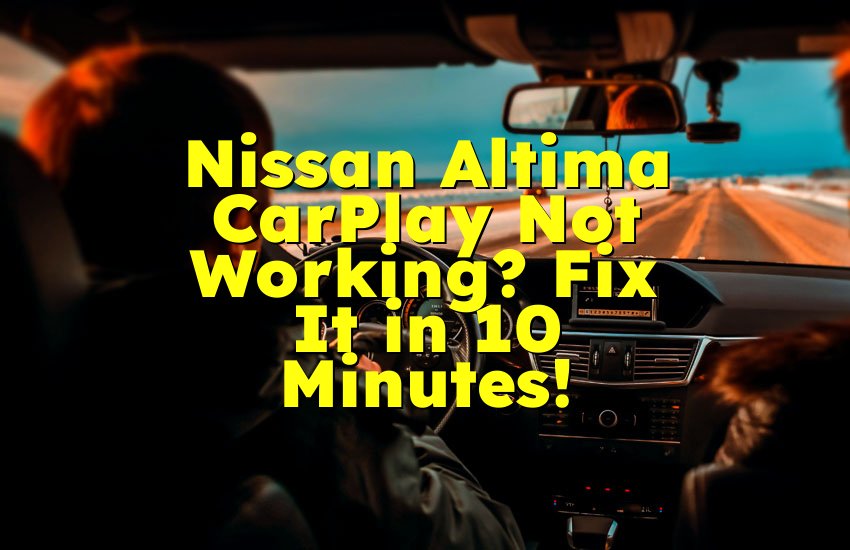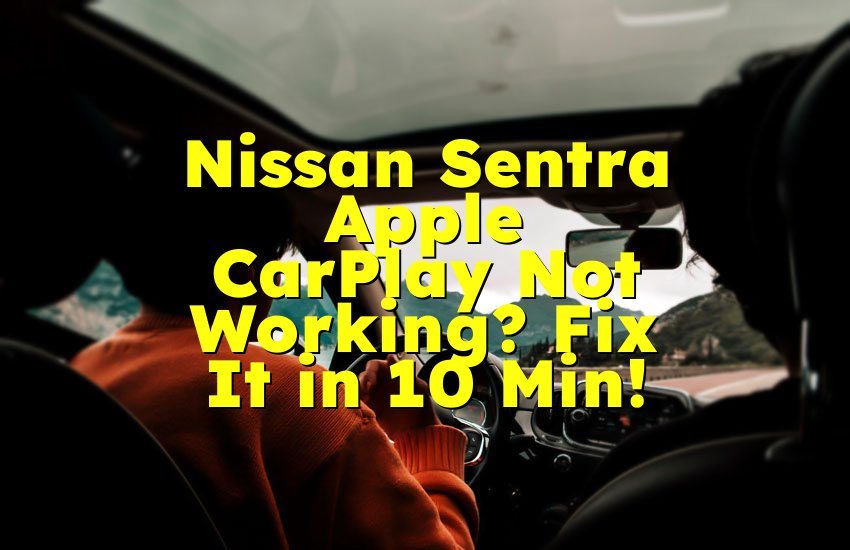As an Amazon Associate, I earn from qualifying purchases at no extra cost to you.
How to Easily Charge Your Car Battery with Another Car (No Tools Needed)
You are stuck in a parking lot, your car won't start, and you’re already late. We've all been there. The lights were probably left on, or maybe the battery just gave up. The good news? You can charge your car battery with another car and be on your way in minutes. You don’t need to call for help or have any fancy tools. This article will show you the exact way to charge your car battery using another car with easy words and clear steps anyone can follow.
Find a Safe Place to Park Both Cars
To start, you need two cars: one with a dead battery and one that has a working battery. Before you do anything else, it's very important to find a safe place to park both cars. This first step is about staying safe and making sure you can connect the cars the right way.
Try to move both cars as close as possible to each other so that the jumper cables can reach both batteries. You don't want to stretch or pull the cables too hard because that could damage them. Always park on a flat surface, not on a hill or slope. If you're in a parking lot, look for a quiet corner where there's not much traffic.
Now, turn off both cars. Set the parking brakes on both vehicles so they won't roll. Make sure both cars are in park (if they're automatic) or in neutral (if they're manual). This will keep both cars from moving while you're working.
Next, open the hoods of both cars. Most hoods can be opened by pulling a small lever inside the car, usually under the steering wheel or on the side of the driver’s seat. After you pull the lever, you'll still need to find the latch under the hood to fully open it. Then, lift the hood and use the prop rod to hold it up.
Take a moment now to look at both car batteries. You should see two terminals on each battery. One is marked with a plus sign (+) and the other with a minus sign (-). The plus is the positive terminal, and the minus is the negative terminal. These are very important because connecting them the wrong way can damage the car or even cause a spark or fire.
If you see dirt, rust, or green or white powder on the battery terminals, clean them gently with a dry cloth or brush. Don't use water or anything wet. A clean connection will help the battery charge better.
Always check for any warning labels under the hood. Some cars have special battery systems that should not be jumped this way. If you see a warning, stop and check your car’s manual or ask a mechanic.
- Make sure both cars are turned off
- Park on flat ground and apply parking brakes
- Open both hoods and find the battery terminals
- Keep the cars close enough so the jumper cables can reach
- Look for the positive (+) and negative (-) signs on the battery
Connect the Jumper Cables the Right Way
Now it's time to use the jumper cables. This is the most important part of charging your car battery with another car, so read carefully and don't rush.
Jumper cables come with two clamps on each end. One red and one black. The red clamp is for the positive terminal and the black clamp is for the negative terminal. You must always follow the right order when connecting them.
Start with the dead car and the good car turned off.
- Take the red clamp and connect it to the positive (+) terminal on the dead battery.
- Now take the other red clamp and connect it to the positive (+) terminal on the good battery.
- Take the black clamp and connect it to the negative (-) terminal on the good battery.
- Now comes the most important connection: take the last black clamp and connect it to an unpainted metal part of the engine or frame on the dead car. This could be a bolt or a clean metal surface. Do not connect it to the negative terminal on the dead battery. This helps reduce the risk of sparks near the battery.
Make sure all the clamps are tight and not loose. You don't want them to fall off when you start the car.
After everything is connected, take one last look to make sure all the clamps are in the right place:
- Red to positive on both batteries
- Black to negative on the good battery
- Black to metal (not battery) on the dead car
Don't let the clamps touch each other while connecting or after they are connected. That can be very dangerous.
- Red clamp to dead battery positive (+)
- Red clamp to good battery positive (+)
- Black clamp to good battery negative (-)
- Black clamp to metal part on dead car (not battery)
- Double-check that everything is tight and correct
Start the Working Car and Let It Run
Now that the jumper cables are properly connected, it’s time to bring power from the working car to the dead one. This step is about building up power and letting the battery wake up slowly and safely.
Start by turning on the car that has the good battery. Just turn the key or push the start button as you normally would. Once the car is running, let it sit for about 5 to 10 minutes. This gives time for the power to flow from the working battery into the dead one.
If the dead battery was only a little weak, you might be able to start it after just a few minutes. But if the battery is very dead or cold (like on a winter morning), give it more time.
While waiting, do not touch the cables. Do not rev the engine of the working car too much either. Just let it idle normally. If you want, you can gently press the gas pedal once or twice, but don't hold it down or press it too hard. This can help push a little more power into the dead battery.
Also, make sure no one leans on the cars, touches the cables, or tries to move the clamps. Just wait calmly while the working car does its job.
After about 10 minutes, you’re ready for the next part.
- Start the car with the good battery
- Let it run for 5 to 10 minutes
- Do not touch the cables during this time
- Do not rev the engine too hard
- Let power flow naturally from good to dead battery
Try Starting the Car with the Dead Battery
Now comes the moment of truth. After letting the working car run for a while, it's time to see if the dead battery has enough power to start the engine.
Go to the car with the dead battery. Sit in the driver’s seat and turn the key or press the start button. Listen carefully.
If the engine starts right away, great! Let the car run and don't turn it off yet. You need to keep it running for at least 15 to 20 minutes so the battery can charge a little more from the engine.
If it does not start, don't panic. Go back and check all the cable connections. Make sure the clamps are tight and in the correct spots. Then, let the working car run for another 5 minutes and try again.
If it still won't start after a few tries, your battery may be too far gone. In that case, you might need a new battery or a mechanic's help.
But usually, if the battery is just low or drained from leaving the lights on, it should start after a few minutes of charging.
- Try starting the car with the dead battery
- If it starts, let it run for 15 to 20 minutes
- If it doesn't start, check connections and try again
- If it still won't start, you might need a new battery
Remove the Jumper Cables in the Right Order
After your car with the dead battery has started and is running, it's time to safely remove the jumper cables. This part is very important too. You need to take them off in the correct order so nothing gets damaged and no sparks happen.
Follow this exact order:
- First, take off the black clamp from the metal part on the car that had the dead battery.
- Then, remove the black clamp from the negative (-) terminal on the car with the good battery.
- Next, take off the red clamp from the positive (+) terminal on the car with the good battery.
- Finally, take off the red clamp from the positive (+) terminal on the car that had the dead battery.
Be careful not to let the clamps touch each other while removing them. Also, don't let the clamps touch any metal on the cars.
Once the cables are off, close the hoods on both cars. Make sure they're locked down fully.
The car you just started should still be running. Let it run or drive it for 30 minutes or more to make sure the battery gets more power from the engine.
- Remove black clamp from metal on dead car
- Remove black clamp from negative (-) on good car
- Remove red clamp from positive (+) on good car
- Remove red clamp from positive (+) on dead car
- Let the car run or drive it for at least 30 minutes
Take Care of the Battery After Charging
Now that your car is running again, you don't want the battery to die again. It's time to think about battery care. Charging it with another car helped you this time, but you don't want this to happen again soon.
First, drive your car for a while. Driving helps the battery recharge more than just letting it idle. Try to drive for at least 30 to 60 minutes without stopping if you can.
Second, think about what caused the battery to die. Did you leave the lights on? Was it very cold? Or maybe the battery is old? Car batteries usually last around 3 to 5 years. If yours is older, it may be time to buy a new one.
You can go to an auto store and ask them to check your battery for free. They will tell you if it's still good or if you need a new one.
Also, think about getting a portable jump starter. These are small devices you can keep in your car. If your battery dies again, you can start it yourself without needing another car.
Lastly, always double-check that you turn off your headlights, interior lights, and other electronics before leaving your car.
- Drive for 30 to 60 minutes to recharge the battery
- Check the age of your battery
- Visit a shop to test your battery for free
- Consider buying a portable jump starter
- Always turn off all lights when parking
Final Thoughts
Charging a car battery with another car is something almost anyone can do. You don't need special skills or tools, just some patience and the right order. First, connect the jumper cables the right way, start the good car, and then try starting your own. Once it works, take care of your battery so it doesn't happen again. This simple process can save you money and time, and now you know exactly how to do it without any confusion.
Frequently Asked Questions (FAQs)
Is it safe to jump-start a car by yourself?
Yes, it is safe to jump-start a car by yourself if you follow all the steps correctly. The most important things are to connect the jumper cables in the right order, keep your hands and tools away from the battery terminals while working, and always make sure the cars are turned off before connecting the cables. Do not let the cable clamps touch each other or other metal parts. As long as you stay calm, follow each step carefully, and work in a safe place, you can do this safely without anyone else's help.
Can jumping a car battery damage my vehicle?
Jumping a car battery the right way will not damage your vehicle. But if the cables are connected wrong, it can cause serious problems like sparks, blown fuses, or even damage to the battery or electrical system. Always connect the positive clamps first and remove the negative ones last. Never connect the black clamp to the negative terminal of the dead battery. If you're unsure, check your car’s manual or ask for help. Done correctly, jump-starting is safe and will not hurt your car.
Do I need a mechanic to jump-start my car?
You do not need a mechanic to jump-start your car. This is something many drivers do on their own. As long as you have jumper cables and another car with a good battery, you can do it yourself. Just follow the steps in this guide. It's a quick fix for a dead battery and can save you a lot of time and money. However, if the battery won't hold a charge after a jump or if you see warning lights or strange smells, it's smart to visit a mechanic.
Is it okay to drive right after jump-starting?
Yes, it's not just okay — it's the best thing to do. After your car starts, the engine will begin to recharge the battery. Driving helps this happen faster. Try to drive for at least 30 minutes without turning off the car. This gives your battery time to regain power. If you turn the car off too soon, it might not start again. Driving also helps the alternator do its job and keeps your car running smoothly after a jump-start.
Can I use any car to jump-start mine?
You can use most cars to jump-start your car, but there are a few things to watch for. Make sure the car giving the jump has a battery of the same voltage, which is usually 12 volts. Avoid using electric vehicles to jump-start another car unless the owner’s manual says it’s okay. Some newer cars have delicate systems and may not be good for jump-starting. When in doubt, use a similar-sized gas-powered car to jump yours.
Do I need to buy new jumper cables each time?
No, you don't need new jumper cables each time. A good pair of jumper cables can last for years if you take care of them. Just keep them clean, dry, and stored in your car's trunk or emergency kit. Make sure the clamps are not rusty or broken. Test them now and then to make sure they still work. Buying one good pair is enough for many uses, and it's a smart thing to keep in your car at all times.
Is it bad to jump-start in the rain?
Jump-starting a car in the rain is usually safe if you are very careful. Water and electricity don't mix well, so always try to stay as dry as possible. Use rubber gloves if you have them, and do not let the metal parts of the cables touch each other or any wet metal surface. Make your connections quickly and clearly. If the rain is very heavy, try to wait until it lightens up or find cover like a garage or parking lot roof before you begin.
Can a car battery die again after jump-starting?
Yes, a car battery can die again even after you jump-start it. If the battery is old, weak, or damaged, it may only hold a charge for a short time. If you didn't drive the car long enough after the jump, it might not have charged fully. Also, if there's a problem with the alternator or another part of the electrical system, the battery won't stay charged. That's why it's a good idea to have the battery tested after a jump.











